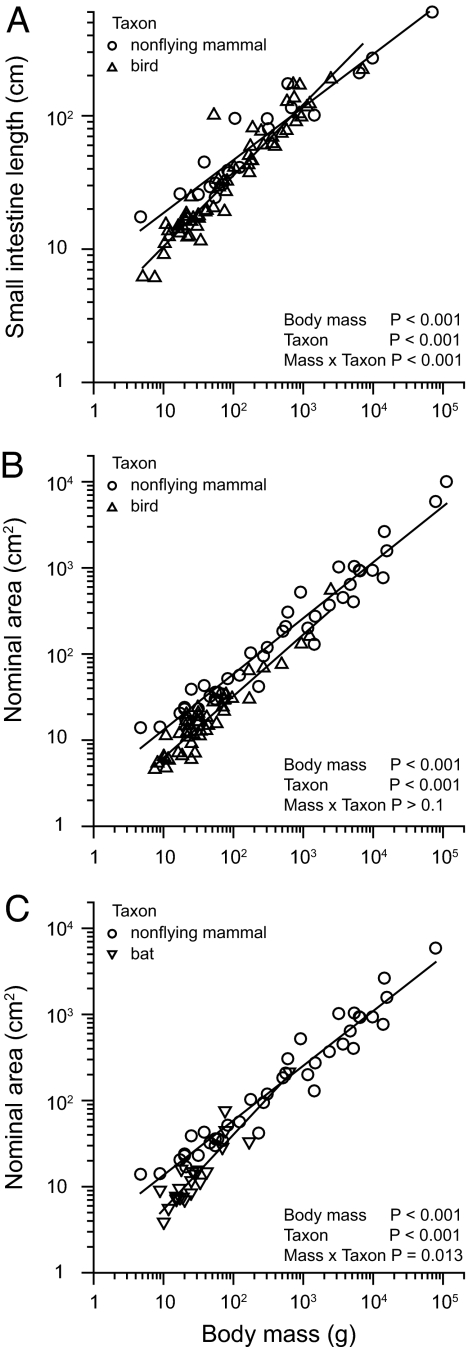Fig. 1.
Small intestine length and nominal (smooth bore tube) surface area in omnivorous birds and mammals. (A and B) A comparison of birds and nonflying mammals. (A) For length, the slopes of these relationships differed significantly (F1,78 = 14.5; n = 61 species and n = 21 species for birds and nonflying mammals, respectively). Birds <195 g have significantly shorter small intestines, according to the Johnson–Neyman technique (50). (B) For nominal surface area, there was no significant difference in slope between birds and nonflying mammals (F1,83 = 2.11; n = 46 species and 41 species in birds and mammals, respectively). When the lines were fit to the common slope of 0.73, the calculated proportionality coefficients (intercept at unity) were 1.14 for birds and 1.79 for mammals (F1,84 = 47.31). Hence, small intestine nominal surface area in birds is ≈36% lower than that in nonflying mammals. (C) Nominal surface area of bat species compared with the nonflying mammals. The slopes of these relationships differed significantly (F1,60 = 7.4; n = 23 species and n = 41 species for bats and nonflying mammals, respectively).

